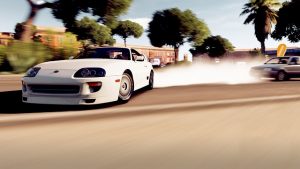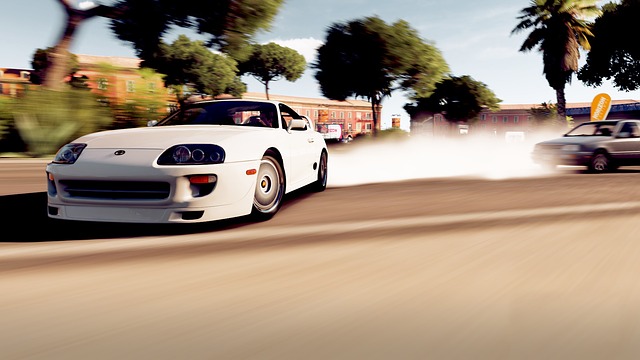The Toyota Supra story
Toyota Supra
Toyota Supra – An all-new Toyota Supra sports car is just around the corner having been previewed at the recently concluded Geneva Motor Show alongside the GR Supra Racing Concept. As per leaked statistics, the new Supra will be powered by a 3L 6-cyl engine, generating 335bhp at 5500rpm and 332 lb-ft torque. It can reach 0-100 kph in less than 4 seconds. While the car is set to arrive in 2019, there is already plenty of buzz generated about Toyota’s re-born model. We explore why…
Birth
The Toyota Supra was built on the spoils left behind by the company’s other sporty looking coupe – the Celica. First introduced at the 1970 Tokyo Motor Show, the Celica competed directly against Ford’s Mustang! By 1978, Toyota brought in a more powerful version of the Celica in its home market named the XX. The following year, the Japanese carmaker brought the Celica XX to American shores. However, in order to make the brand stand apart from a Mexican beer of the same name, the car was renamed as Celica Supra!
Reverence
Fans wouldn’t revere the Supra as one of Toyota’s greatest sports vehicle if the original model hadn’t created several successors. The first-generation car’s greatest achievement in racing was, by Toyota’s own admission, performing speed car duties in the 1979 US Grand Prix. The pace cars didn’t want to post sluggish acceleration numbers so Toyota supercharged the straight-six to double it is horsepower output.
Second Generation
The second gen Toyota Supra was introduced in 1981. Back then, it became the first car with computer navigation in its home country. In America, Toyota Supra Miami was run by a 145bhp 2.8L engine and styled by the ‘trendy’ designs of the 80s!
Supra in Europe
In 1982, Toyota decided to penetrate the European market with the Supra. While initially, only France and UK were targeted with limited production numbers, the car later expanded to Sweden and Switzerland as well. Interestingly, Australia and New Zealand were also major markets for the Supra in the 1980s.
The A70
By the time the third gen Supra was introduced in 1986, Toyota had completely differentiated the Celica from the Supra. The latter was known as A70 came with features like ABS electric suspensions! Also available as an option from the third gen onwards was the removable top, which interestingly found mixed reviews among the enthusiasts.
Turbo Supra
Engineers forced the turbocharged six-cylinder’s outcome to 270hp for the Turbo A, a model created to homologate the automobile in competition series like Japan Touring Car Tournament (JTCC), Western European touring car series and even the World Rally Championship’s Group A category. Toyota highlights the limited-edition Supra 3.0GT Turbo A was the most effective Japanese development car at that time, with 0-100kph in less than 5seconds, off to a high acceleration of 270kph.
The 90s and all that JZ
In the 90s, Toyota’s now famous JZ engine was used for the Supra, which further enhanced the car’s power. This made the Supra Toyota’s most expensive car across all lineups in the Americas. While it wasn’t a volume driver vehicle even then, it had its cult following usually among the cream section of buyers.
Farewell generation
 The fourth gen model took four years to build, making it better than its predecessors in every way possible. The Turbo model of the same was considered faster than the Porsche’s 911 Carrera, reaching 0-100 kph in 4.6 seconds!
The fourth gen model took four years to build, making it better than its predecessors in every way possible. The Turbo model of the same was considered faster than the Porsche’s 911 Carrera, reaching 0-100 kph in 4.6 seconds!
By 1995, the Supra debuted at the Le Mans alongside the likes of McLaren F1 GTR and Ferrari F40. At the turn of the millennium, the Supra managed to steal hearts of millions of racing and movie enthusiasts by making an appearance in the blockbuster movie, The Fast and the Furious! The following year in 2002, Toyota officially announced the end of production of the Supra, having discontinued the model in the US in 1998 and two years earlier in UK.
Over a span of 24 years, Toyota managed to sell 594,000 units of the Supra globally!

